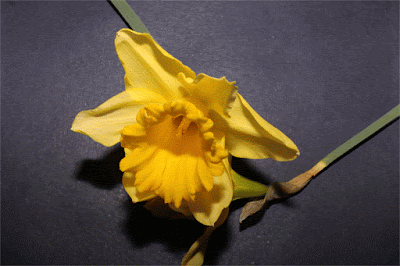Daffodil Decay - Animated GIF

Over a couple of weeks I took two images each day of the daffodils, one in the morning and one in the afternoon. I then put the images together in Photoshop and made them into a GIF. First I layered the individual images on top of each other with the first one on the bottom layer and then stacked the images all the way up to the last image on the top. I then resized the images to a lower resolution, otherwise Photoshop wouldn't be able to animate it as a GIF. Then all I needed to do was go to "File" then "Save for web" Next I just selected GIF as the presets section, ticked the "Animate" box and it was ready to click "ok" and save.